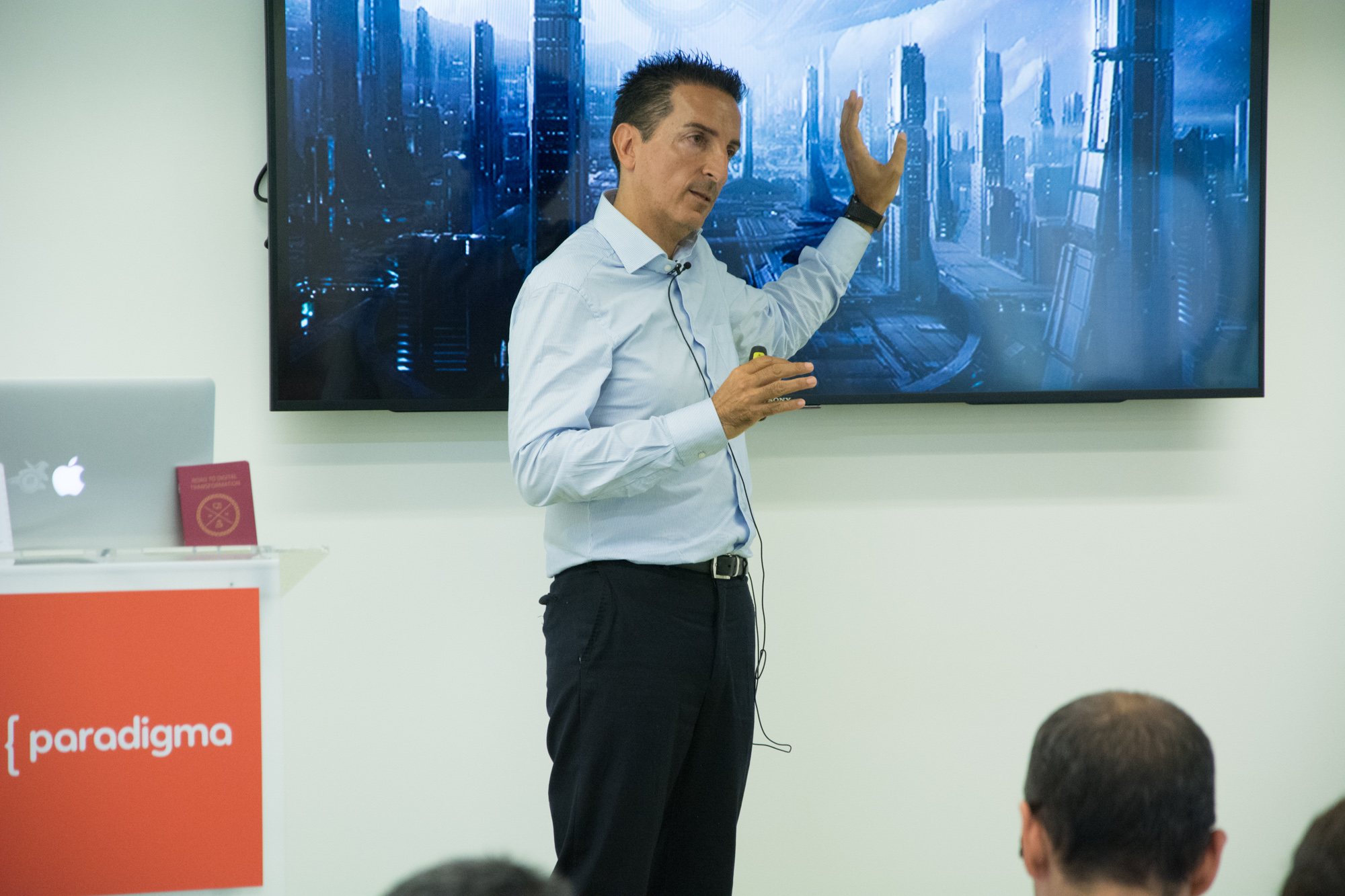At this point, we have heard a lot about digital transformation. At Paradigma we have several years of experience with the digitalisation of large companies in Spain and recently we have witnessed a certain confusion about how to implement the digital transformation. Where are we going? Where do we begin?
In this post, we intend to show what a digital transformation consists of, how to approach it and ,most of all, why it is a process which should be imperative for any organisation hoping to survive in the digital age.
% block:image
% block:heading
% text:
% level:1
% type:--h30-15-400
% name:left
% endblock
What does it mean to digitally transform?
When thinking about digital transformation, many people only think about technology, but for us it is so much more. It is change within the business and within culture itself. Without these key axes, there is no value in digital transformation and it will not work.
For us, the foundation is our company, based on pure talent and removing unnecessary procedure or hierarchy and where our employees feel at ease. Put simply, we treat our people like people.
We agree that digital transformation is not easy. The only rule is this: “Try and learn” - trying (and probably failing) in order to learn from our mistakes and improve. Digital transformation begins with a desire and a decision, and we keep persevering until we succeed.
Why transform digitally?
Surviving in an evolving world is imperative: otherwise a business can miss the boat. We must take advantage of the situation in hand before it is too late. An example of a successful transition is that of Coca Cola, a company which is continually innovating their algorithms and data collection processes in order to predict the consumption of their product in a given market. Thus they organise the production in their factories and are able to reduce warehouse storage to almost zero. Their Machine Learning system is one of the most advanced in the world.
On the other hand, the competition has changed: digital giants are threatening every sector. We live in a world that is both digital and global. Digitalisation has not only changed the world but also the way in which we live. We live in the age of the customer. This is the first time in history where the clients have more advanced technology than businesses.
At company level, this is the beginning of the age of the machines. Why? Because we are digitalising the world by means of satellites, sensors, IoT and machine to machine. All of this generates a huge amount of data which many companies view as superfluous rather than seeing its true value. At the present time we need to be capable of using and interpreting this large volume of data as a whole and not only a sample.
Thus, we find ourselves in an age of fusion, mixing the human intelligence with that of machines and data. The future is artificial intelligence and the ultimate goal of the digital giants is to take as much as they can from it.
Digitalisation is changing exponentially. This means that time frames have changed. We no longer speak in terms of years but rather weeks and even days.

How can a company transform into a digital company?
This step requires a logical consequence of the world in which we live, of the digital and of the global, of the age of the customers and of the beginning of the age of the machines.
What do I need to do? We are heading towards a model of Customer Centricity Obsession.
Attractive interfaces are no longer enough. We must personally know and understand our client in order to adapt to them, to adapt our channels and to personalise our products and services. We do this via continual analysis of data relating to their navigation and behaviour. However this is not useful if we do not have open lines of communication with the client at all times.
On the other hand, we must prioritise all mobile channels. In order to achieve this it is essential to have both an app and a website that are always up to date and fully responsive.
This requires technological platforms such as IaaS, infrastructure as a service and Paas; or services such as AWS which allow us to understand and adapt to the client each and every day.
We work in a climate of continuous delivery which enables full agility of development and production in only seven minutes including all required checks. Of course we cannot forget our centralised data system using a data centric architect providing us with data which is continuously up to date and in real time. Without these tools, we could not update all of our digital channels.
In the digital era we must open our minds for this is what makes the digital leaders so disruptive. Regardless of the specific form, companies always have a top down structure, from the CEO, CIO, CTO downwards.
The next step is to make a strategic digital transformation plan. We must know where we are and where we want to be within a specific time frame. Then we must fix our objectives and the budget which we will require. Once all is in place, where do we start? Firstly, we will need a plan of execution with defined KPIs so that, should our strategy fail, we are able to react in a timely manner.
Another point to keep in mind is the price. In order to avoid competing in terms of price we must add value. How can we achieve this? By increasing the value within other companies in different sectors. For this, we must create an open ecosystem.
What will the world be like in five years' time? What will our client want in five years' time? We don't know, but what we do know for sure is that much will have changed entirely from what we see today. Therefore, what is the objective of digital transformation? The goal is to create a business that adapts to whatever may happen in the future. It's up to us to choose to live in the new world instead of dying in the old one.
If you are interested in learning more about digital transformation, don't miss Óscar Méndez' presentation at the II Tech Brunch at Paradigma's offices. Sit back, relax and enjoy the ride!
Comments are moderated and will only be visible if they add to the discussion in a constructive way. If you disagree with a point, please, be polite.






Tell us what you think.